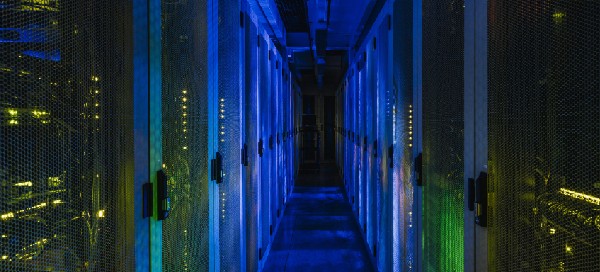APAC leaders agree building resilience is imperative
APAC leaders agree building resilience is imperative but are they truly putting their money where their mouths are?

But are they truly putting their money where their mouths are?
The concept of change – as related to an organisation’s ability to scan the horizon of its business landscape – has fundamentally altered in the wake of unprecedented global disruption. The COVID-19 pandemic drove the Asia-Pacific (APAC) economy to a grinding halt within a matter of weeks in 2020, forcing businesses to reevaluate their risk management strategies.
A recent study conducted by Economist Impact, sponsored by Iron Mountain, detailed the significance of this paradigm shift in the report, Resilience Reimagined. Highlighting the devastating economic impact of the disruption – the research estimates the global losses in 2020 and 2021 totalled over US$10.3trn, or 12% of the global GDP – a renewed focus has been placed upon the principle of resilience.
While managing and mitigating risk has been a core function of business for centuries, today’s resilience imperatives demand involving every aspect of an organisation in a coordinated effort, with clear and constant communication at the forefront of this reinvigorated strategy. As noted by Margaret Millett, Head of Global Resilience at Uber, “Building organisational resilience should be part of everyone’s job.”
This article takes a closer look at each risk strategy, and outlines the framework behind the resilience imperative.
The four pillars of modern resilience
The Economist Impact report details four major components of an elevated risk management framework. Adopting these strategies will bolster the resilience capabilities of your organisation, while protecting the most valuable commodities of your business.
Workplace transformation
The possibilities of a remote-capable workforce were considered before the disruption of the global pandemic. The digitisation of paper-based data and the adoption of cloud-based business architectures is progressing at a rapid pace for today’s APAC organisations – but is the adoption of a remote-hybrid workforce happening fast enough?
“It’s like a hospital,” says Scott Baldwin, head of enterprise resilience at Netflix. “Having an emergency room, an ambulance, all the critical care is important, but you want to prevent the heart attack from happening in the first place.”
Data storage on cloud-based platforms and the implementation of zero-trust network access (ZTNA) enable organisations to securely store, manage and protect their critical data while embracing a remote-capable and bring-your-own-device (BYOD) work infrastructure.
The implementation of a digital workflow can successfully bolster organisational resilience.
Data governance and security
The digital transformation has brought tremendous advantages for APAC organisations, with benefits ranging from productivity and inclusion improvements for remote workforces to a reduced carbon footprint. However, despite these achievements, issues surrounding data security have remained at the forefront of the transition conversation, and have held some businesses back from making what may be an inevitable push towards digitisation.
“Cyber-threats will only get more sophisticated,” says Ms. Millett. Addressing this changing landscape, she adds: “Organisations need to look at their capabilities and the capabilities of the companies they outsource to.”
The Economist’s Resilience Reimagined report identifies the importance of heightened cybersecurity protocols, and details a global shift towards adopting tech strategies to combat threat actors that seek to take advantage of organisational lapses in data governance. Research for the article included a bespoke survey of 611 senior executives from across four major regions (APAC, North America, Europe & Latin America) who shared cybersecurity best practices.
54% of today’s risk management leaders invested in ongoing prevention of cyber risk and threats protocols pre-pandemic, while 56% had begun the digitisation of paper records and for safe-keeping before COVID hit. In the APAC region, 30.8% of Australasian businesses listed cybersecurity as their highest organisational priority prior to the pandemic, while 21.2% of Hong Kong organisations and 37.7% of surveyed companies in India felt the same. Today, those numbers have risen substantially for Australian and New Zealand businesses – up to 40.4% – while Hong Kong and India’s percentages remain the same.
The majority of risk-aware organisations recognised the endto-end monitoring capabilities of today’s leading cloud-based architectures and weighed the benefits of authorisation and multi-factor authentication (MFA) protocols against traditional methods of paper records filing. Leveraging the power of monitoring and cybersecurity tools can heighten organisational resilience.
Sustainability
Environmental, social and governance (ESG) matters have increasingly come to the forefront of business operations as sustainability initiatives grow in popularity. The first line of vulnerability for organisations is their reputation. Public disapproval is propagated at light speed across social media platforms, eroding an organisation’s standing with their customers and investors – as well as politicians and regulators who may be monitoring the industry your business operates within.
The perception of negligence in regards to environmental protection measures can cause instant and lasting damage to business prospects. As a result, “feel good” mission statements and green rhetoric are no longer enough.
One area of focus is dedicating staff and resources to support ESG initiatives. 41% of surveyed organisations have implemented such measures, bolstering the 49% that deployed ESG strategies prior to the disruption caused by COVID. 42% adopted change-management strategies in their supply chain management architecture postpandemic, adding to the 46% that had some form of sustainability initiative activated beforehand.
Australasian businesses placed an emphasis on dedicating staff and resources to sustainability efforts pre-pandemic with 51.9% of companies surveyed having some sort of initiative deployed. Today, the increase in the perceived importance of sustainability efforts has risen to an astounding 76.9% for both Australasian and Hong Kong businesses. In India, the focus on sustainability has increased to 88.7%, showcasing the push for a reduced carbon footprint in the APAC region.
The increased awareness and governance has magnified the efforts today’s green-conscious businesses have already placed upon enhancing the sustainability of their business processes. The push towards an environmentally-responsible future has led to the creation of a ‘circular economy.’
The circular economy is defined as a business and social model that focuses on reducing the extraction of natural resources while minimising the incidence of industrial waste, and extending the end-of-life timeline for IT assets in an environmentally responsible manner.
Continued adoption of important sustainability initiatives can augment business resilience.
Operational efficiency
How does a business effectively reconcile the potential costs associated with risk – and the actual costs spent anticipating and combating it? Most organisations (75%) claim measuring resilience is a particular challenge. There are no widely accepted standard metrics, making demonstrable progress difficult to ascertain. Shareholders and other stakeholders will want to know that resilience efforts are gaining traction in ways that insulate the organisation from potential threats. A set of key performance indicators must be established that reflect the degree of resilience a business has embedded.
In the APAC region, 82.7% of Australian, New Zealand and Hong Kong businesses believe a dedicated resilience budget is more important than ever following the pandemic; organisations in India mirror the sentiment with 86.8% of surveyed businesses placing resources into building resilient practices.
Organisations that are transparent and proactive about resilience measures tend to win over stakeholders, which can have financial benefits down the line. By clearly outlining and communicating the challenges and vulnerabilities that threaten the efficiency of their business processes, workforces can feel empowered to be part of proposed solutions.
Staff will be more motivated, and talented individuals will be more likely to choose an employer they see as stably and prudently run.
All of this amounts to a competitive advantage, signalling brand health in times of normality and adversity.
When inevitable future disruption occurs, the most resilient entities are best placed to weather the storm.
Leveraging the power of today’s technology-driven platforms can reinforce your organisation’s resilience imperative. The insight gained from this end-to-end visibility will allow your business to mine data in new and insightful ways, bolstering the resilience of your organisation by identifying opportunities to improve processes and operations.
The migration to a cloud-based service provider can reinforce operational resilience.
The importance of adopting resilience initiatives for your business
The Economist discovered that 84% of leaders surveyed for Resilience Reimagined agreed somewhat or strongly that organisational resilience must embrace all parts of the business architecture.
Yet, in the APAC region only 19.2% of surveyed Australasian businesses identified the CEO or President as the role most directly responsible for championing resilience initiatives, and only 15.4% of Hong Kong and 32.1% of organisations in India agreed.
Globally just 15% of organisations involve heads of departments in resilience initiatives. This is striking. Leaders understand that building resilience requires involving the entire organisation, but this goal cannot be achieved without department leaders.
APAC organisations are beginning to adopt the digitisation and remote work infrastructure necessary to mitigate risks both forecasted and unforeseen. While the standardisation of protocols does not currently exist – best practices regarding organisational resilience are few and far between, after all – Iron Mountain is proud to partner with business leaders in efforts to blaze the trail for a unified, resilient business process.
Read the full Economist Impact report Resilience Reimagined >
Related resources
View More Resources
Information transformation: AI enablement for public sector agencies

The Data Centre ITAD & Decommissioning Process: An Overview
